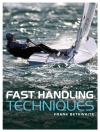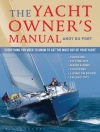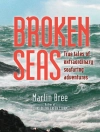Laugh and learn kayaking skills, from basic to advanced, through detailed text and more than 400 humorous illustrations!
If you want to learn how to paddle—and laugh out loud while doing so—William Nealy’s classic illustrated kayaking-skills manual remains dead-on hilarious. Kayak demonstrates important paddling techniques through humorous illustrations, along with detailed explanations from the renowned kayaker.
This book is perfect for beginners and more experienced paddlers, from hardcore hippy hairboaters who used to catch air in their block-long Dancers to insane youngsters clattering tiny plastic boats down steep creeks with more rocks than water. You’ll get to know everything from kayak and rapids anatomy to paddling techniques to river rescue methods.
Inside you’ll find
- Over 400 illustrations that break down even the most complex kayaking skills
- Carefully crafted information to reflect the latest in paddling technology
- How-to descriptions that make even difficult whitewater techniques understandable
William Nealy is back and more useful and entertaining than ever. You may break a rib laughing, but with him holding your hand, you’ll be less likely to break a bone while boofing an insane rapid or even an entire waterfall!
Inhaltsverzeichnis
Flip Animation Instructions
Introduction
Paddle Fu
Hydrotopography
Air Traffic Control
Swimming Self Rescue
Self Rescue
River Rescue
The Joy of Flood (Big Water Technique)
First Aid for Riverrunners
Appendix: survival, interface, braces, etc.
Glossry of Riverese
Über den Autor
A world-famous cartoonist, William Nealy is best-known for his groundbreaking book “Kayak, ” which combined expert paddling instruction as well as artful caricatures and parodies of the whitewater enthusiasts themselves. The quality of his work transcends its subject; this book, and the others that followed, spawned a host of imitators and made William a cult figure in the world of outdoor sports. Born on February 4, 1953, Nealy grew up in Birmingham, Alabama. Never comfortable in a highly structured environment, he left high school before graduating and then attended St. Johns College, eventually graduating from Birmingham-Southern. He brought a thorough and rigorous intelligence to his interests and avocations, all of which, in his hands, became arts.












